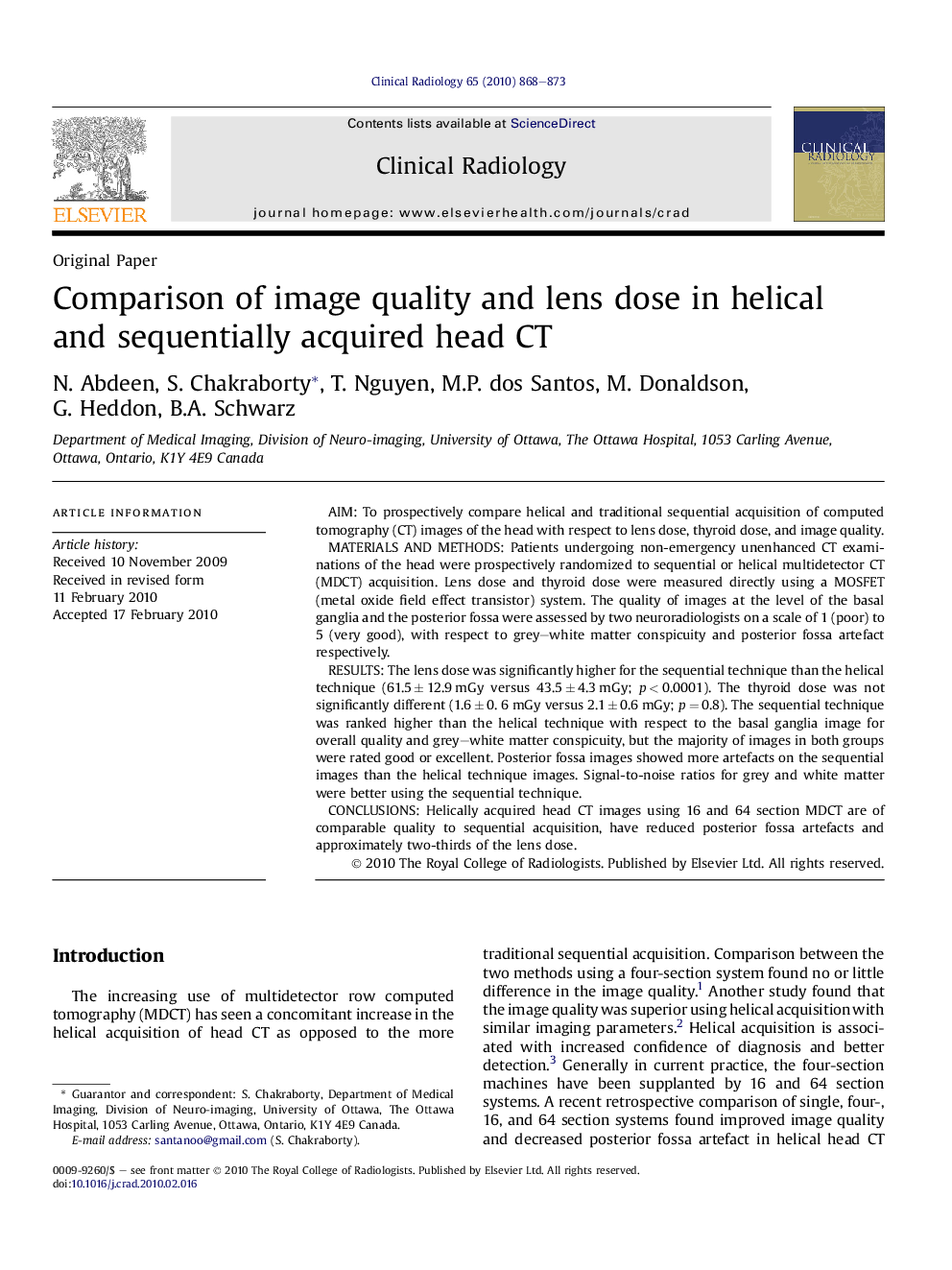| Article ID | Journal | Published Year | Pages | File Type |
|---|---|---|---|---|
| 3982965 | Clinical Radiology | 2010 | 6 Pages |
AimTo prospectively compare helical and traditional sequential acquisition of computed tomography (CT) images of the head with respect to lens dose, thyroid dose, and image quality.Materials and methodsPatients undergoing non-emergency unenhanced CT examinations of the head were prospectively randomized to sequential or helical multidetector CT (MDCT) acquisition. Lens dose and thyroid dose were measured directly using a MOSFET (metal oxide field effect transistor) system. The quality of images at the level of the basal ganglia and the posterior fossa were assessed by two neuroradiologists on a scale of 1 (poor) to 5 (very good), with respect to grey–white matter conspicuity and posterior fossa artefact respectively.ResultsThe lens dose was significantly higher for the sequential technique than the helical technique (61.5 ± 12.9 mGy versus 43.5 ± 4.3 mGy; p < 0.0001). The thyroid dose was not significantly different (1.6 ± 0. 6 mGy versus 2.1 ± 0.6 mGy; p = 0.8). The sequential technique was ranked higher than the helical technique with respect to the basal ganglia image for overall quality and grey–white matter conspicuity, but the majority of images in both groups were rated good or excellent. Posterior fossa images showed more artefacts on the sequential images than the helical technique images. Signal-to-noise ratios for grey and white matter were better using the sequential technique.ConclusionsHelically acquired head CT images using 16 and 64 section MDCT are of comparable quality to sequential acquisition, have reduced posterior fossa artefacts and approximately two-thirds of the lens dose.
